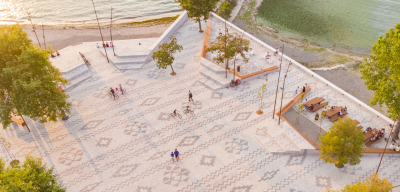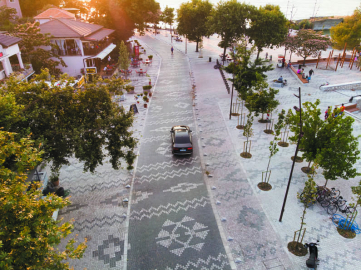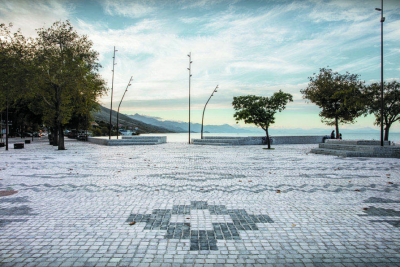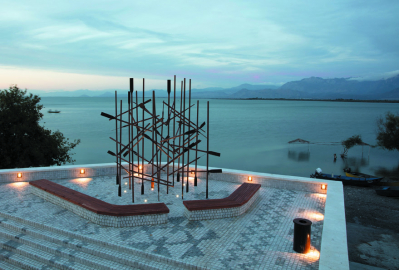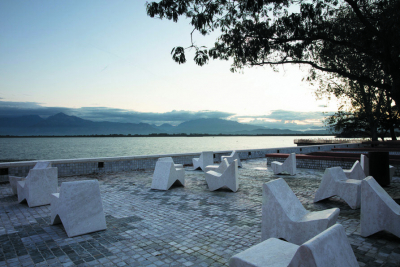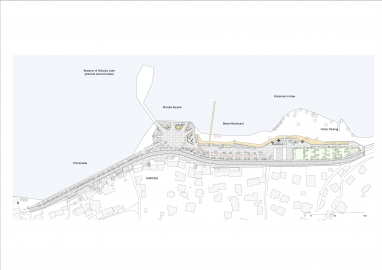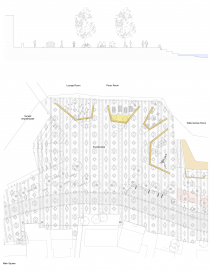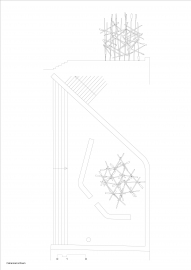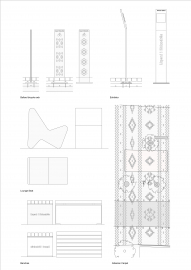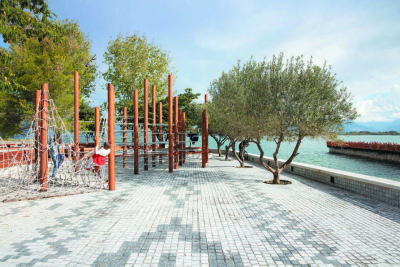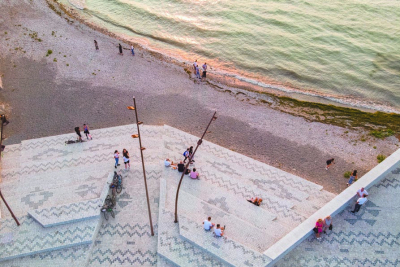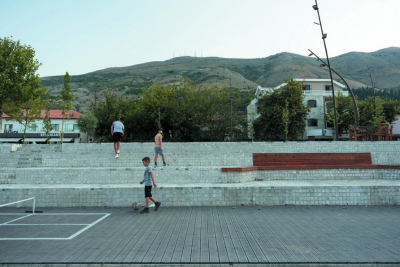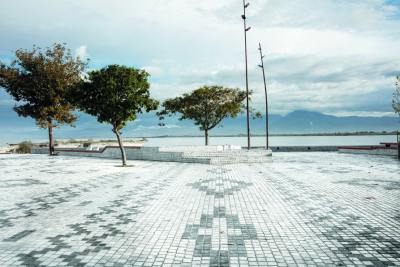Albanian Carpet
After the fall of the communist regime, the waterfront of Shiroka was occupied with illegal constructions. “Albanian Carpet” returns the waterfront to the citizens demolishing the illegal constructions, opening the views over the lake, and creating an alive public space with a domestic character.
The project prioritizes pedestrian and bicycle circulation using shared pavement when car traffic is needed. The space is fragmented into a series of open rooms inspired by the traditional Albanian room (ODA), characterized by a long, low U-shaped bench where family members seat, lay and even sleep. These rooms open the views over the lake and stimulate citizens interaction with different uses such as playground room, picnic room, lounge room, amphitheater, and the fisherman's room.
The interior side of the U-shaped rooms is introverted and made of wood while the exterior is made of stone and forms steps for seating that transform the central square into an improvised theater. Pavement, seats, and steps are covered with black and white granite stones following the traditional pattern of the Albanian carpets, which provides a unique and domestic identity to the public space.
Shiroka is a fishing village located on the shores of Shkodra Lake, near the border with Montenegro. Its inhabitants lived for centuries from the lake, men fishing with small rowboats and women tending orchards and weaving carpets by hand. The reaction to the end of a communist regime that had deprived citizens of living from traditional “private” activities was widespread mistrust in the public sphere, which led to a period characterized by uncontrolled occupation and privatization of public space. As result, the public space of the waterfront of Shkodra lake was occupied with illegal constructions such as private houses, restaurants, private parking areas, and kiosks.
The “Albanian Carpet” project not only aims to physically and functionally restore Shiroka waterfront, but also to rebuild the feeling of belonging and attachment to the public space, which is conceived as a large house made of different open rooms inspired by the Albanian ODA and is covered with a traditional Albanian carpet.
The whole intervention is built using local stone and wood.

